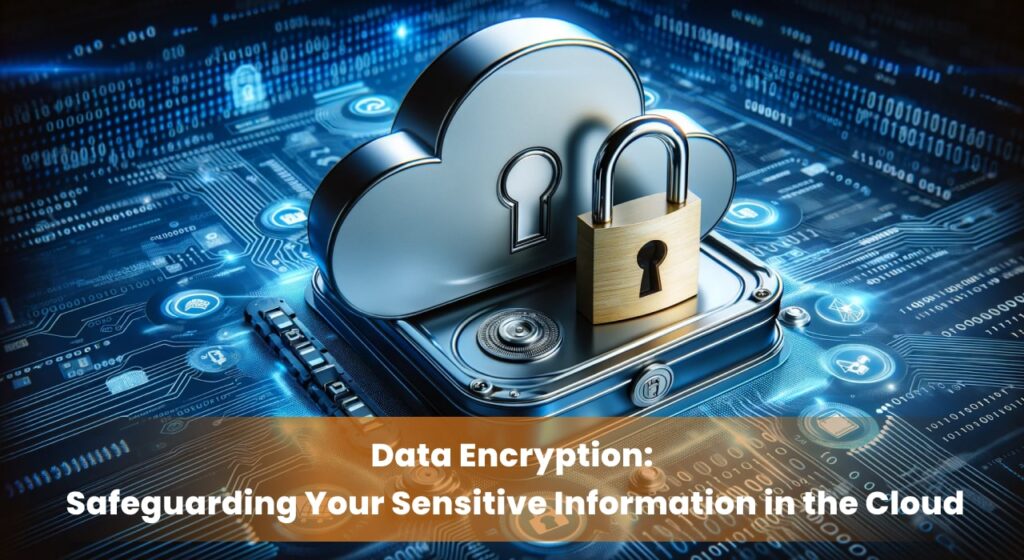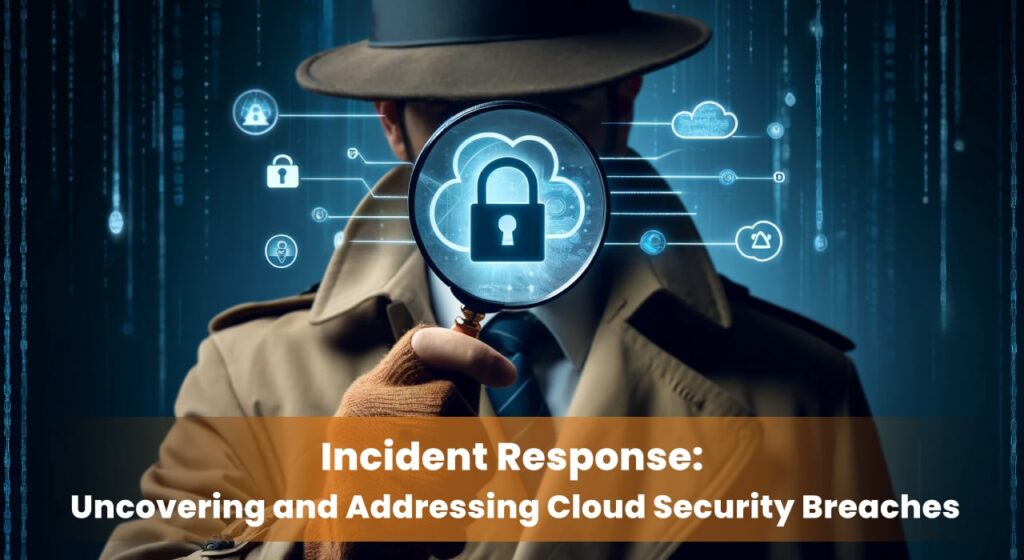
The Crucial Shield for Your Cloud-Powered Business
The digital environment has engendered a fundamental shift in the way small businesses function. Cloud computing, with its on-demand scalability and cost-efficiency, has become an indispensable engine for growth. A staggering 94% of small and medium-sized businesses leverage cloud services according to a 2023 Flexera report, highlighting its pervasive adoption. However, this reliance on cloud infrastructure introduces a new layer of vulnerability the risk of cyberattacks.
While the cloud offers numerous advantages, it doesn’t eliminate the responsibility of safeguarding sensitive data. Neglecting cybersecurity can have devastating consequences. The IBM Cost of a Data Breach Report 2023 revealed the average total cost of a data breach for small businesses to be a staggering $4.24 million. These breaches can erode customer trust, damage brand reputation, and result in hefty fines for non-compliance with data privacy regulations.
The concept of “shared responsibility” is paramount in cloud security. While cloud providers offer robust security features, the ultimate responsibility for data security resides with the business using the service. Understanding this shared model is crucial for implementing effective cloud security practices. By prioritizing cybersecurity efforts, small businesses can harness the full potential of the cloud while mitigating the inherent risks.
Why Cloud Security Matters for Small Businesses

The misconception that small businesses are less susceptible to cyberattacks is a dangerous fallacy. In reality, they are increasingly targeted by cybercriminals due to the perception of weaker security measures. A 2023 Verizon Business Insider Threat Report found that 43% of cyberattacks targeted small and medium-sized businesses, highlighting their growing vulnerability. These attacks are becoming more sophisticated, employing advanced techniques like phishing emails that mimic legitimate sources and ransomware that encrypts critical data, holding it hostage for ransom.
The very essence of a successful small business thrives on the security of its data. Cloud storage often houses a treasure trove of sensitive information, including customer names, financial records, intellectual property, and trade secrets. A data breach exposing this data can have a ripple effect of devastating consequences. The financial impact can be crippling, encompassing not just the cost of remediation but also potential fines for regulatory non-compliance. Furthermore, the reputational damage caused by a breach can erode customer trust and hinder future business prospects.
Considering the potential financial and reputational fallout, prioritizing cloud security becomes a non negotiable investment for any small business. By implementing robust security measures, businesses can significantly reduce the risk of data breaches and safeguard their valuable assets. This proactive approach not only fosters customer confidence but also empowers businesses to focus on their core competencies and achieve sustainable growth.
| Statistic | Source |
|---|---|
| 43% of cyberattacks targeted small and medium-sized businesses | 2023 Verizon Business Insider Threat Report |
| Average total cost of a data breach for small businesses: $4.24 million | IBM Cost of a Data Breach Report 2023 |
Top Cybersecurity Threats for Small Businesses

The cloud offers a plethora of benefits, but it also introduces a new security landscape for small businesses. Navigating this landscape requires vigilance against a range of cyber threats.
- Phishing Attacks: These deceptive emails or messages, often disguised as legitimate sources, aim to trick employees into revealing sensitive information or clicking malicious links that can download malware.
- Malware and Ransomware: Malicious software, including ransomware, can infiltrate cloud systems through various means. Malware disrupts operations, while ransomware encrypts critical data, holding it hostage for a ransom payment.
- Unsecured APIs: Application Programming Interfaces (APIs) act as gateways for data exchange between cloud applications. Inadequate API security protocols can create vulnerabilities for unauthorized access.
- Weak Passwords: Simple or reused passwords are easily compromised by hackers, granting them access to sensitive data and accounts.
- Insider Threats: Disgruntled employees or those with compromised credentials can pose a significant security risk.
- Misconfigurations: Inadvertent errors in cloud service configurations can expose vulnerabilities that cybercriminals can exploit.
Regular security assessments and gap analyses are crucial for identifying these vulnerabilities and implementing appropriate mitigation strategies. By proactively addressing these threats, small businesses can significantly enhance their cloud security posture.
Cloud Security Best Practices

This section dives deep into the essential practices that safeguard your small business in the cloud environment.
Evaluate Your Cloud Provider
Selecting a reputable cloud provider with a robust security posture is the foundation of your cloud security strategy. Look for providers with demonstrably strong security practices, as evidenced by industry certifications like SOC 2 (Security, Availability, Confidentiality) or PCI DSS (Payment Card Industry Data Security Standard). These certifications provide independent verification of a provider’s commitment to data security and compliance with industry regulations.
Establish Cloud Security Policies
Clearly defined cloud security policies are the cornerstone of effective security management. These policies should outline authorized cloud usage, access controls for sensitive data, and robust password management protocols. By establishing these policies and ensuring employee compliance, you can significantly reduce the risk of inadvertent data exposure or unauthorized access. These policies also play a vital role in adhering to data privacy regulations that may apply to your business, such as GDPR (General Data Protection Regulation) or CCPA (California Consumer Privacy Act).
Implement Strong Authentication
Multi-factor authentication (MFA) is an essential security measure that adds an extra layer of protection beyond simple passwords. MFA requires users to verify their identity through a secondary factor, such as a one-time passcode sent via text message or a fingerprint scan. This additional step significantly hampers unauthorized access attempts, even if a hacker acquires a user’s password.
Encrypt Your Data
Data encryption safeguards sensitive information both at rest (stored in the cloud) and in transit (being transferred). Encryption renders data unreadable without a decryption key, significantly reducing the risk of compromise even in the event of a security breach. Most reputable cloud providers offer data encryption features, but it’s crucial to understand your specific responsibilities for managing encryption keys.
Enable Cloud Security Features
Your cloud provider likely offers a suite of built-in security features designed to protect your data and environment. These features may include firewalls to filter incoming and outgoing traffic, intrusion detection systems to identify suspicious activity, and access controls to restrict unauthorized access to specific resources. Familiarize yourself with these features and leverage them to establish a robust security posture within your cloud environment.
Monitor for Suspicious Activity
Continuous monitoring is paramount for detecting and responding to potential security threats promptly. Utilize cloud monitoring tools to track user activity, identify unusual login attempts, and monitor for any suspicious behavior within your cloud environment. Consider managed security services offered by some cloud providers or cybersecurity service providers for comprehensive monitoring and threat detection capabilities.
Train Your Employees
Empowering your employees with cybersecurity awareness training is crucial for mitigating human error, a significant factor in data breaches. Training programs should educate employees on common cyber threats like phishing emails, social engineering tactics, and password hygiene best practices. These programs can significantly reduce the risk of employees inadvertently compromising sensitive data or granting access to unauthorized individuals. Several free cybersecurity resources are available from government agencies or non-profit organizations to help train your employees.
Conduct Regular Security Assessments
Regular security assessments, also known as cybersecurity assessments or security gap analyses, are vital for identifying weaknesses in your cloud security posture. These assessments involve a systematic evaluation of your cloud environment for vulnerabilities in configurations, access controls, and overall security practices. By conducting these assessments periodically, you can proactively address any identified vulnerabilities and strengthen your cloud security defenses.
While the strategies outlined above provide a robust foundation for cloud security, emerging technologies like Artificial Intelligence (AI) offer even more advanced threat detection and prevention capabilities. To explore how AI can revolutionize your small business’s cybersecurity posture, consider reading our article: AI in Cybersecurity: Revolutionizing Protection for Small Businesses
Develop an Incident Response Plan

While preventative measures are crucial, even the most secure systems can be breached. Having a documented incident response plan in place ensures a swift and effective response to a security incident, minimizing damage and facilitating a faster recovery. This plan outlines a clear course of action for each stage of the incident response process:
- Detection: The initial step involves identifying a potential security breach through security monitoring tools or employee reports. Early detection is critical for minimizing the impact of the incident.
- Containment: The primary objective at this stage is to isolate the breach and prevent further damage. This may involve blocking unauthorized access, quarantining infected systems, or shutting down impacted cloud resources.
- Eradication: Once the breach is contained, the focus shifts towards removing the threat. This may involve removing malware, patching vulnerabilities, or resetting compromised credentials.
- Recovery: The goal here is to restore normal operations as quickly as possible. This involves restoring data from backups, reconfiguring systems, and verifying the effectiveness of the implemented remediation measures.
- Reporting: Documenting the incident response process and reporting the breach to relevant parties, such as law enforcement or regulatory agencies, is essential. This report helps in understanding the scope of the incident, identifying lessons learned, and improving future response efforts.
Developing a comprehensive incident response plan specific to your business needs is highly recommended. Several online resources from cybersecurity organizations or government agencies offer guidance and templates to assist you in creating an effective plan.
In the ever-evolving cyber threat landscape, prioritizing cloud security best practices is no longer optional for small businesses. By implementing the strategies outlined in this article, you can significantly strengthen your cloud security posture, safeguard sensitive data, and minimize the risk of costly data breaches. Taking a proactive approach to cloud security fosters trust with your customers, empowers your employees, and paves the way for sustainable growth in the digital age. Don’t wait until it’s too late take action today and secure your cloud environment for a brighter digital future.
Categorized in:
Comments